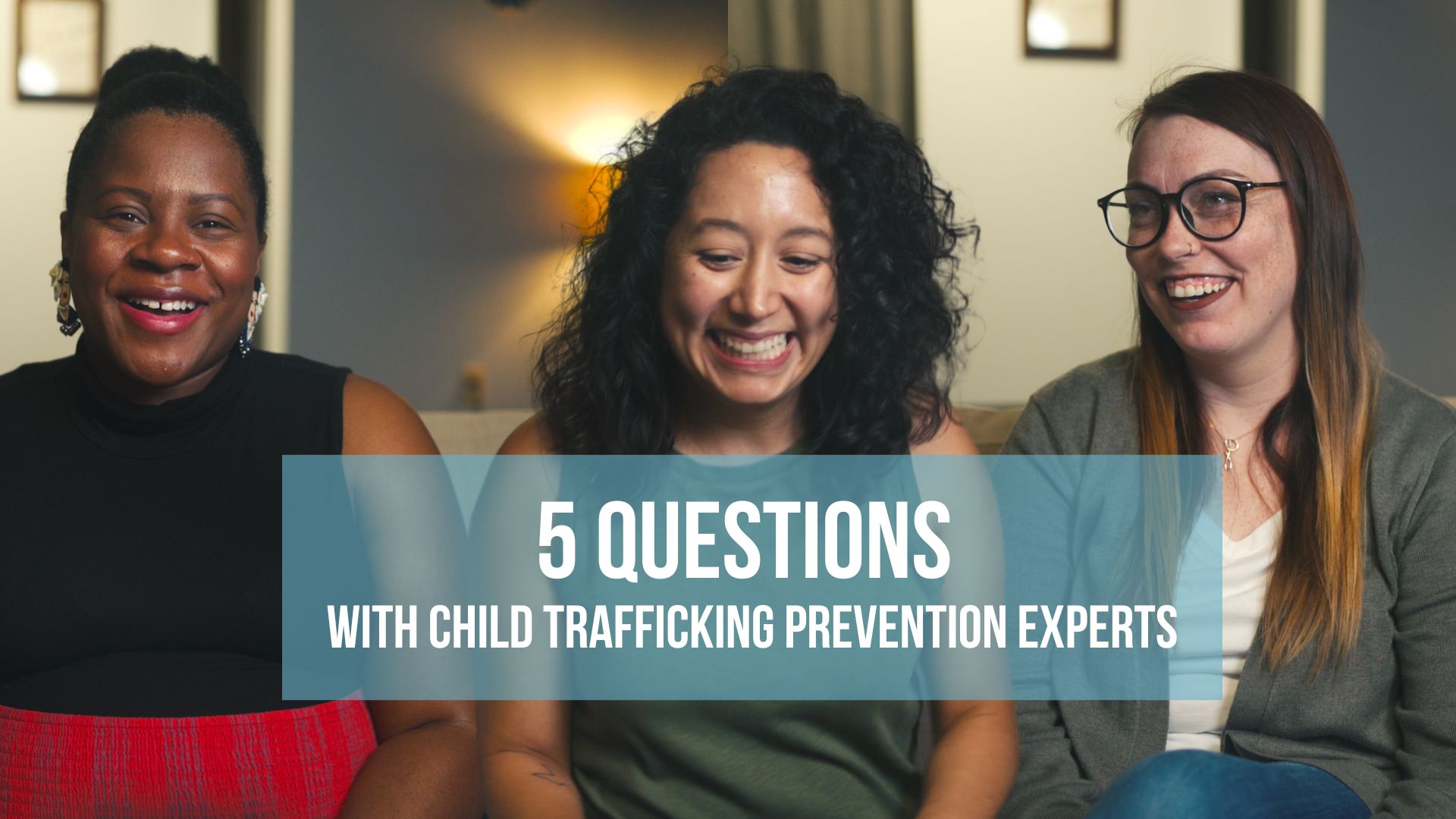We Asked Child Trafficking Prevention Experts 5 Questions

We sat down with human trafficking prevention experts and asked them five commonly asked questions around child exploitation.
What is a common misunderstanding about human trafficking?
“Sometimes adults have this visual in their head of what a youth who is experiencing this looks like. They're looking for a youth who is maybe very isolated or who doesn't have a lot of friends in school, which can cause them to not step back and consider other vulnerabilities. Kids who maybe are popular or more outgoing could be putting themselves in a dangerous situation like trafficking.” -Daniella Pérez
“I think the biggest misunderstanding people have about child trafficking is that it is always an abduction situation. They think their kids are going to get snatched off the street. And while those things can be true, it's not always the case.” -Sarah Mouser
What's the difference between prevention and awareness?
“When we think about prevention versus awareness, we really want to focus on skill-building and prevention. So often when we talk about awareness, we only ask ourselves “what is human trafficking”, which isn't necessarily going to keep kids safe. So we really want to build those skills to ask ourselves, if you think somebody that you know is being trafficked, what do you do about it? How do you ask for help? Who do you ask for help? Where could you go if you needed help in your community? And how do they actually seek support for that specific thing?” -Aria Flood
What puts kids at risk of trafficking, and what protects them?
“Things like neighborhood violence, gang involvement, lack of community resources, and no after school programs puts kids at risk for trafficking. On the other side of that are the protective factors, the things that keep kids safe, like mentoring programs, after school activities, or any other element of knowledge, skill and relationship that they could build with safe adults.” -Aria Flood
Are some children at higher risk than others?
“The people who are disproportionately victimized in child sex trafficking and child trafficking in general, are people who are already identifying within marginalized or oppressed populations. We're talking Black and brown youth, LGBTQ+ youth, immigrant communities, refugee communities and indigenous folks. Societal and structural factors contribute to marginalization. We also know that youth who have been in the juvenile justice or child welfare system are more likely to experience this type of victimization.” -Aria Flood
What advice do you have for parents and caregivers in keeping youth safe?
“I would recommend parents and caregivers of youth be careful of how we react to things. What we hear from kids is that they've heard their parents talk about in a negative manner to something they saw on TV, or they saw their parents victim-blame a story they were reading online. Youth absorb all this information and think, well, if my parents thought that about that person, what do they think about me in this situation? So youth don't see their parents or their caregivers as that safe person that they could talk to.”-Daniella Pérez
“Making sure that your youth knows that if they get into a situation where they're in trouble, that they know that they can come to you and no matter what, that you'll be a safe person for them to approach to get some help.” -Sarah Mouser
This “Eyes on Trafficking” story is reprinted from its original online location.
 ABOUT PBJ LEARNING
ABOUT PBJ LEARNING
PBJ Learning is a leading provider of online human trafficking training, focusing on awareness and prevention education. Their interactive Human Trafficking Essentials online course is used worldwide to educate professionals and individuals how to recognize human trafficking and how to respond to potential victims. Learn on any web browser (even your mobile phone) at any time.
More stories like this can be found in your PBJ Learning Knowledge Vault.
EYES ON TRAFFICKING
This “Eyes on Trafficking” story is reprinted from its original online location.
ABOUT PBJ LEARNING
PBJ Learning is a leading provider of online human trafficking training, focusing on awareness and prevention education. Their interactive Human Trafficking Essentials online course is used worldwide to educate professionals and individuals how to recognize human trafficking and how to respond to potential victims. Learn on any web browser (even your mobile phone) at any time.
More stories like this can be found in your PBJ Learning Knowledge Vault.
